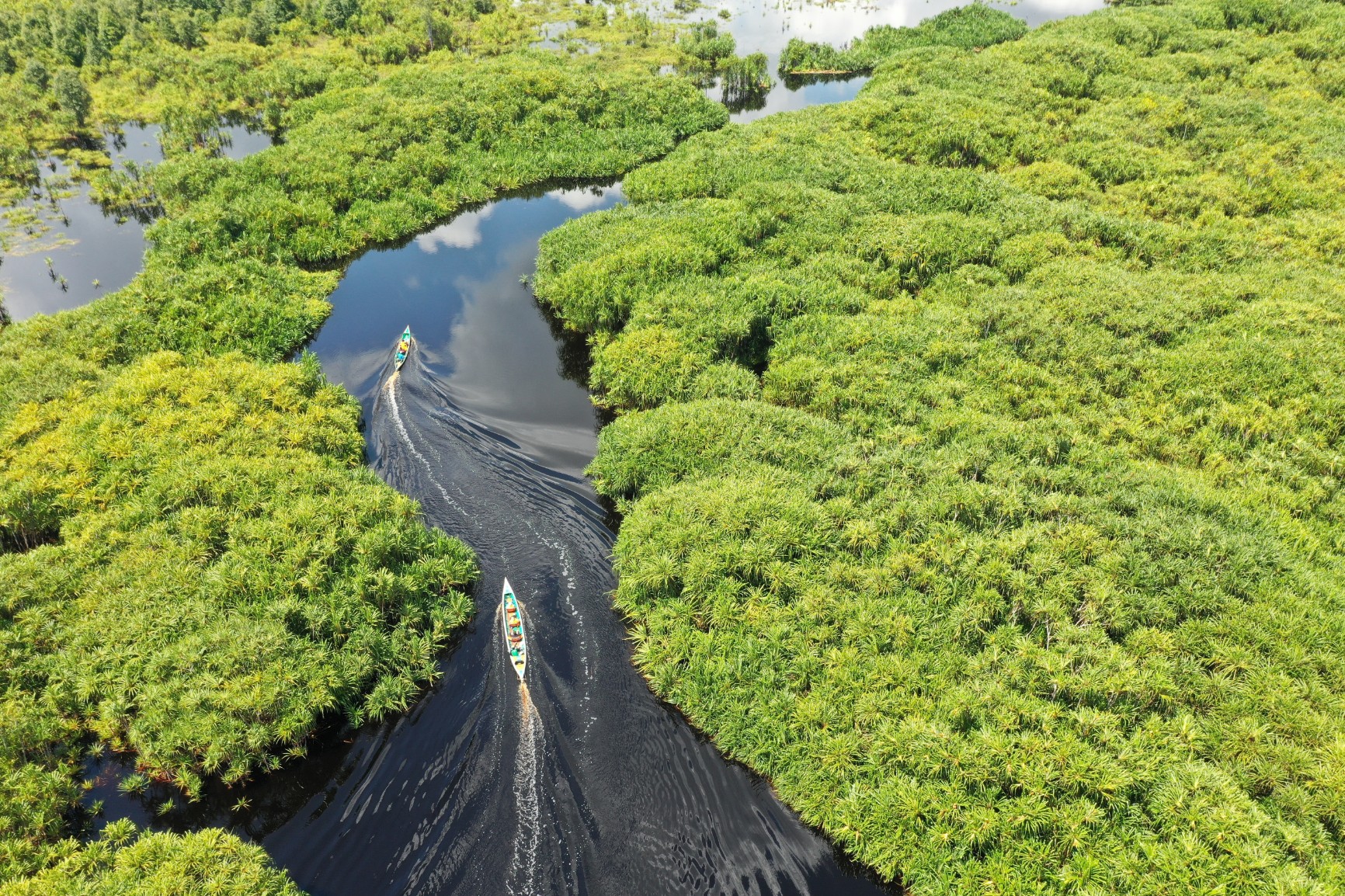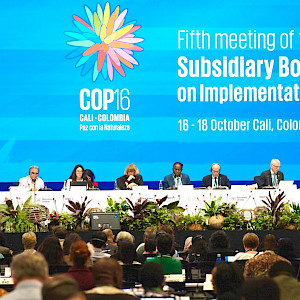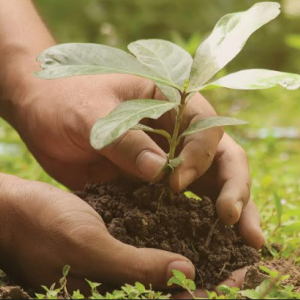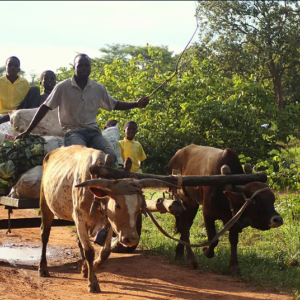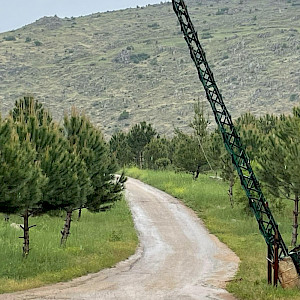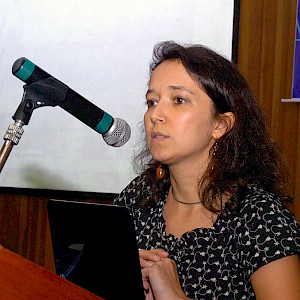The expiration of the 2011-2020 Strategic Plan for Biodiversity with its associated “Aichi Targets” has created a vacuum in nature conservation policies globally that urgently needs to be filled by a new set of global goals and targets for this decade. A global framework to halt and reverse biodiversity loss by 2030 and restore degraded ecosystems is currently being negotiated by the Parties of the Convention on Biological Diversity (CBD), and it is hoped that it will be agreed upon at the next and fifteenth meeting of the Conference of the Parties to the Convention (CoP) in December 2022. However, the Open-ended Working Group (OEWG), which has the mandate to come up with a proposal for the post-2020 Global Biodiversity Framework (GBF) supported by all the Parties, so far only managed to achieve consensus on limited sections in four meetings. There is a lot at stake: in our view, the GBF should lead the world towards becoming nature-positive by 2030 (1) and restoration of degraded ecosystems is crucial to reverse nature loss.
In parallel, the adoption of the UN Decade on Ecosystem Restoration 2021 - 2030 (UN Decade) has created a significant momentum making a global restoration movement a reality, by catalyzing restoration commitments from governments, civil society and private sector, motivating people around the world and boosting a wealth of actors to bring in support. Today, more people than ever are interested in restoration.
Despite these efforts and the expectations to scale up implementation on the ground, there are still methodological, technical and political issues that might prevent CBD Parties from agreeing on an ambitious Target on ecosystem restoration in the GBF that can resolve the flaws that existed with its predecessor Aichi Target 15, agreed in 2010, which reads “restoration of at least 15 percent of degraded ecosystems”.
Only what gets measured gets done
Aichi Target 15 was one of the few that could not be measured because it was expressed in terms of percentage of degraded ecosystems. The problem was not the percentage in itself. The challenge was the absence of an agreed definition of ‘degradation’ in the CBD, which has multiple interpretations depending on what is considered a baseline year or a reference ecosystem towards which restoration efforts need to point towards. Without agreeing on what is degraded, it is not possible to identify what needs to be restored. This lack of definition continues as a key discussion point in the negotiations for Target 2.
The solution many Parties proposed during contact groups at the OEWG meetings is that Target 2 uses hectares or absolute numbers instead of percentages. A number of hectares (or km for rivers) will allow to measure global progress in a straigh-forward manner, and avoid lengthy discussions on the definition of degradation and baselines. Countries will have the responsibility to establish their restoration targets following science-based definitions of degradation and restoration (such as the ones from the UNCCD and UN Decade on Ecosystem Restoration), relying on best knowledge, focusing on priority ecosystems and reporting their activities in hectares (or km for rivers). This will also allow measurement of progress towards the achievement of the global target that would not be possible if countries reported restoration in percentages of degraded ecosystems.
Restore natural and transformed ecosystems
At the OEWG-4 meeting in Nairobi, the major technical issue that emerged with regard to Target 2 is its scope; in other words, what ‘ecosystem restoration’ entails. The different options in the spectrum are:
- - A) restoration of transformed and degraded ecosystems back to a natural state (ecological restoration),
- - B) restoration of transformed ecosystems focusing on rehabilitating their ecosystem functions and services (rehabilitation), or
- - C) restoration of areas aiming to reduce societal impacts, contaminants and other threats (remediation) (2).
While some Parties propose to include only ecological restoration, others prefer to have Target 2 covering all types of restoration, including rehabilitation and remediation. The latter is in line with the UN Decade’s objectives, but since Target 2 is part of the GBF Goal A that aims at increasing areas of natural ecosystems, as well as their integrity, resilience and connectivity, a few considerations can be done on the different options that Parties might have:
- 1. Target 2 includes all types of restoration and set two sub-targets: one for ecological restoration and one for rehabilitation/remediation (3),
- 2. Create a separate numeric target on rehabilitation and remediation under Goal B on nature contributions to people,
- 3. If none of the previous options work, set up an all encompassing Target 2 emphasizing that its implementation will focus on restoring priority ecosystems (threatened natural ecosystems, key biodiversity areas, etc).
Either option will need a robust monitoring framework with indicators that require countries to report on the different types of restoration and ecosystems with numerical and measurable targets for the achievement of the Goals. This will enable the implementation of ecosystem restoration in a wide continuum of practices, “from degraded natural to more intact natural ecosystems (often by assisting natural regeneration), from degraded, modified ecosystems to more functional modified ecosystems (e.g. restoration of urban areas and farmlands), and from modified ecosystems towards more natural ecosystems, provided that the rights and needs of people who depend on that ecosystem are not compromised”(4).
All ecosystems have a significant role to play
In 2016, the CBD secretariat released an assessment of progress towards Aichi Target 5 and 15 (5) that highlighted that most restoration targets at national level focused exclusively on forests, probably because of the greater availability of information on the state and trends of forests. This time around, bias in the data available creates the risk that Parties focus again mostly on forests at the potential expense of other ecosystems, such as grasslands and wetlands. From the standpoint of biodiversity, national targets should be representative of the diversity of all natural ecosystems.
To avoid this bias and ensure that no ecosystem is overlooked, it is important to have different (sub)targets per ecosystem, based on an estimate of the global restoration potential for each of them in terms of hectares in the case of inland water, terrestrial ecosystems as well as coastal and marine ecosystems, and kilometers in the case of rivers.
As in the draft EU Restoration Law - which is the only example that is currently available of a supranational piece of legislation on restoration - rivers need to be accounted for with separate metrics because in this peculiar ecosystem, increased integrity and biodiversity can only be measured at longitudinal level. Measuring freshwater restoration just in hectares and without a specific target for rivers would lead to the omission of a crucial habitat for millions of species, hampering the achievement of the overall GBF.
The proposed ambition for Target 2 is not enough
In the current version of the text (6), the bracketed absolute number is “[at least [1] billion ha globally]”. Putting aside the options for percentages -as discussed above- the numerical target of 1 billion is not ambitious enough as it does not reflect the global restoration needs and potential; it merely reflects the sum of the existing restoration commitments for terrestrial ecosystems that roughly 100 countries have submitted to the three Rio Conventions and other international processes and agreements (e.g. Bonn Challenge) (7). Moreover, this figure does not consider the restoration potential for oceans.
There is some data available that can help parties to increase their ambition for Target 2. For ecosystem restoration type A (ecological restoration) The Science Brief on Ecosystems prepared by the Group on Earth Observations Biodiversity Observation Network (GEO BON) for the OEWG-4 concludes that the restoration of 350-400 Mha of transformed to natural ecosystems over the period 2021-2030 is needed to achieve the needed natural ecosystems’ net gain by 2030 (8).
For the restoration of transformed ecosystems (types B and C), the UNCCD Global Land Outlook 2 (9) proposes a 2050 scenario for the restoration potential of terrestrial ecosystems to halt degradation, improve soil condition and ecosystem functions and protect areas from further conversion. This scenario shows that it is feasible to restore 5.2 billion hectares by 2050, from which 1.6 billion ha are cropland, 2.2 billion ha are grazing land, and 1,4 billion ha are natural areas. Although these figures are for 2050 scenarios, it should be possible to calculate how much degraded terrestrial ecosystems for options B) and C) should be restored by 2030 (10).
We argue that the scientific community behind the UN Decade on Ecosystem Restoration is well placed to provide figures on the restoration needs and potential, especially for freshwater and marine ecosystems, to help CBD Parties determine the ambitions for this target.
In addition to setting up an ambitious numeric target, we have to be aware that an area-based target might not be enough to comprehensively cover a variety of ecosystems, prioritize key biodiversity areas and ensure integrity. For these key elements, work will still need to be done in setting the right indicators that avoid focusing restoration efforts on the lowest opportunity cost areas.
Avoiding the risks of restoration done wrong
Restoration has an enormous capacity to cost-effectively store carbon, produce timber and other ecosystem services. Some actors may prefer to focus attention on these immediate gains instead of facing the real challenge of cutting carbon emissions and protecting biodiversity.
Ecosystem restoration done ‘wrong’ might lead to random tree planting, ecosystem replacement, and forced displacement - these being just a few of a long list of serious potential restoration failures. For this reason, it will be essential to state in Target 2 that the goal of restoration is to enhance integrity and connectivity in and within ecosystems and ensure equitable governance.
The ways in which Target 2 is formulated will have a profound impact on how countries will engage in restoration activities this decade. It will determine what, where and how ecosystems will be restored and ultimately if and how the UN Decade will meet its ambitions of restoring at least 1 billion hectares by 2030. It is in the hands of CBD Parties to define this target in a way that will promote the increase of healthy ecosystems and the decrease of nature loss, fragmentation and degradation. And the restoration community can play a pivotal role in providing evidence and advocating for an ambitious, comprehensive and measurable target.
Knowing the failures from the past, we have lessons on how to improve future actions.
AUTHORS:
- Barbara Bendandi, Global Coordinator Decade on Ecosystem Restoration, WWF
- Adriana Vidal, Senior Policy Advisor, Climate Change, IUCN
REFERENCES:
- 1. Nature Positive is achieved after halting and reversing nature loss measured from a baseline of 2020, through increasing the health, abundance, diversity and resilience of species, populations and ecosystems so that by 2030 nature is visibly and measurably on the path of recovery. By 2050, nature must recover so that thriving ecosystems and nature-based solutions continue to support future generations, the diversity of life and play a critical role in halting runaway climate change. Source: https://www.naturepositive.org/
- 2. Gann, G. D., McDonald, T., Walder, B., Aronson, J., Nelson, C. R., Jonson, J., Hallett, J. Eisenberg, C. Guariguata, M. Liu, J. Hua, F., Echeverria, C., …& Dixon, K. W. (2019). International principles and standards for the practice of ecological restoration. Restoration Ecology. 27 (S1): S1-S46., 27(S1), S1-S46.
- 3. Secretariat of the Convention on Biological Diversity. Science briefs on targets, goals and monitoring in support of the post-2020 global biodiversity framework negotiations. 2022. CBD/WG2020/4/INF/2/Rev.2. Available from: https://www.cbd.int/doc/c/c874/6eb7/813f0201cd67299c9eb10a4a/wg2020-04-inf-02-rev-02-en.pdf
- 4. UNEP, The UN Decade on Ecosystem Restoration 2021-2030: Scaling up Restoration of Degraded and Destroyed Ecosystems, 2019. https://wedocs.unep.org/handle/20.500.11822/30919
- 5. CBD Note by the Executive Secretary, Update Assessment of Progress towards Aichi Biodiversity Targets 5 and 15, 16 November 2016. https://www.cbd.int/doc/meetings/cop/cop-13/information/cop-13-inf-12-en.pdf
- 6. https://www.cbd.int/doc/c/e78b/cd50/33c655f7454e736d03668481/wg2020-04-crp-06-en.pdf
- 7. https://www.pbl.nl/sites/default/files/downloads/pbl-2022-the-global-potential-for-land-restoration-glo2-4816_0.pdf
- 8. Id.
- 9. PBL Netherlands Environmental Assessment, The global potential for land restoration: Scenarios for the Global Land Outlook 2, March 2022 Agencyhttps://www.pbl.nl/sites/default/files/downloads/pbl-2022-the-global-potential-for-land-restoration-glo2-4816_0.pdf
- 10. For instance WWF, IUCN and other conservation organizations have calculated that 30% of the total degraded river equals 313,680 kilometers. WWF, IUCN, CI, TNC, WI, WWT, BLI, The post-2020 Global Biodiversity Framework. Proposal on Target 2 on Ecosystem Restoration for Rivers. To be published in September 2022.
The UN Decade on Ecosystem Restoration 2021-2030, led by the United Nations Environment Programme, the Food and Agriculture Organization of the United Nations and partners, covers terrestrial as well as coastal and marine ecosystems. As global call to action, it will draw together political support, scientific research and financial muscle to massively scale up restoration. Find out how you can contribute to the UN Decade. Follow #GenerationRestoration

